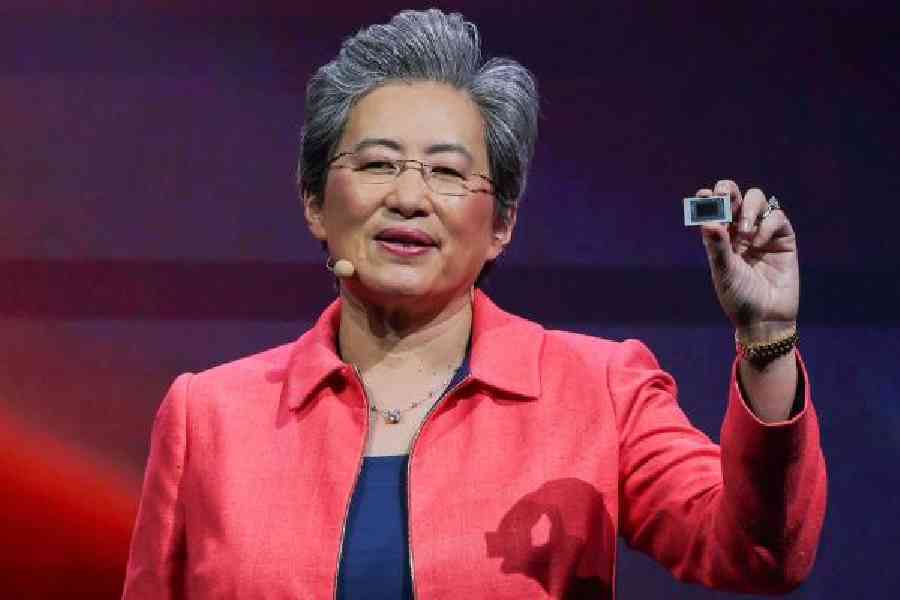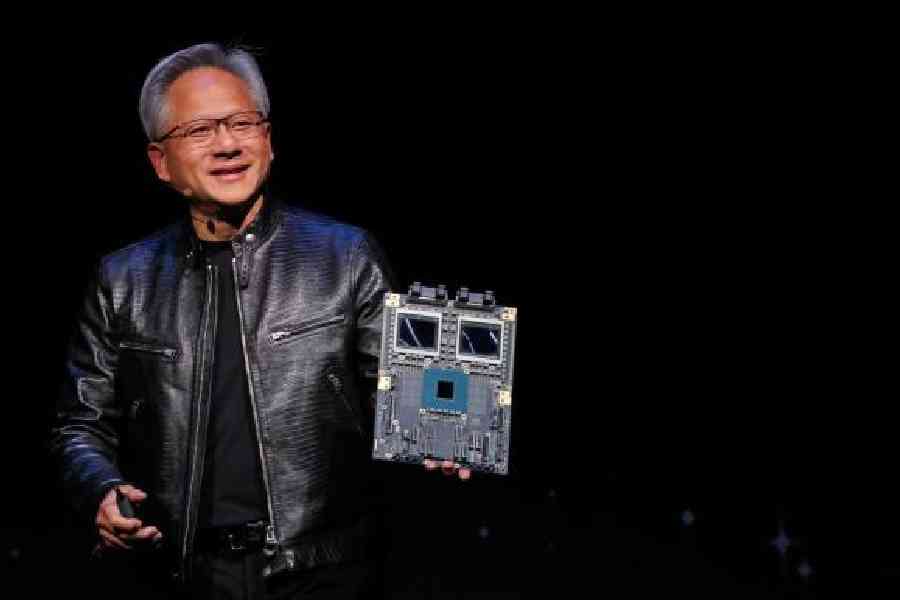Nvidia announced the next generation of its artificial intelligence processors — called Rubin — less than three months after its most recent launch. Set to roll out in 2026, chief executive Jensen Huang said the new family of chips would include new graphics (GPU) and central processors (CPU) as well as networking chips. In March, the company had announced the upcoming Blackwell model, which is still in production and expected to ship to customers later in 2024.
Further, Nvidia wants to relese new AI chip models on a “one-year rhythm”. So far, the company has had a slower two-year update timeline for chips. The move will excel the competition between Nvidia on the one hand, AMD and Intel on the other.
“A new computing age is starting,” Huang said at National Taiwan University in Taipei as part of the Computex trade show.
Rubin is expected to offer better power efficiency, as the Silicon Valley-based company attempts to address concerns that Big Tech’s expansion of AI data centres is putting pressure on the energy grid.
“Today, we’re at the cusp of a major shift in computing. With our innovations in AI and accelerated computing, we’re pushing the boundaries of what’s possible and driving the next wave of technological advancement,” Huang said.
AMD also used the Computex technology trade show to unveil its latest artificial intelligence processors. The company is launching its first Zen 5 desktop processors in July, with the Ryzen 9 9950X flagship labelled as “the world’s most powerful desktop consumer processor”. The new Ryzen 9000 series of CPUs include the Ryzen 9 9950X, Ryzen 9 9900X, Ryzen 7 9700X, and Ryzen 5 9600X. It will offer gains of up to 56 per cent in Blender against Intel’s Core i9-14900K with the new flagship 9950X, and 21 per cent in Cinebench 2024.

AMD CEO Lisa Su makes the opening speech at Computex forum in Taipei on June 3
The company also announced its next generation of Ryzen laptop processors for generative AI workloads: the Ryzen AI 300 Series. According to The Verge, the new Ryzen AI chips are built on AMD’s latest architectures for neural, integrated graphics, and general processing: XDNA2 for the NPU, RDNA 3.5 for the iGPU, which now has up to 16 compute units, and Zen 5 for the CPU. The first two processors in this series are the Ryzen AI 9 HX 370 and Ryzen AI 9 365. Both have 50 TOPS NPU, but the HX variant is the higher-end of the two.
Meanwhile, Nvidia’s pace is having a positive impact on the wider stock market. The chipmaker added about $350 billion to its market capitalisation after it reported increase revenue growth. Nvidia sells most of the AI chips needed to train large language models, such as OpenAI’s GPT but competition comes in the form of AMD and Intel, as well as customised chips developed by Amazon, Google and Microsoft.
Nvidia began over three decades ago making graphics processing units and over 15 years ago, Huang realised that the technology inside its GPUs was also suited to other data intensive computing tasks, such as AI.











